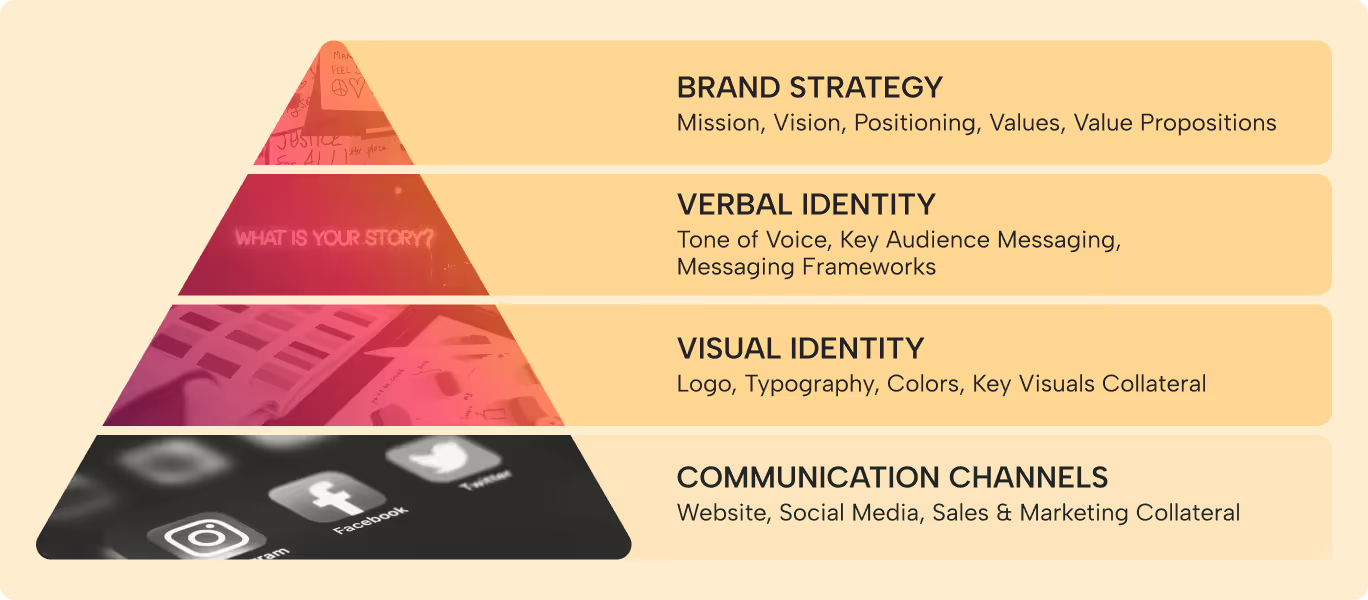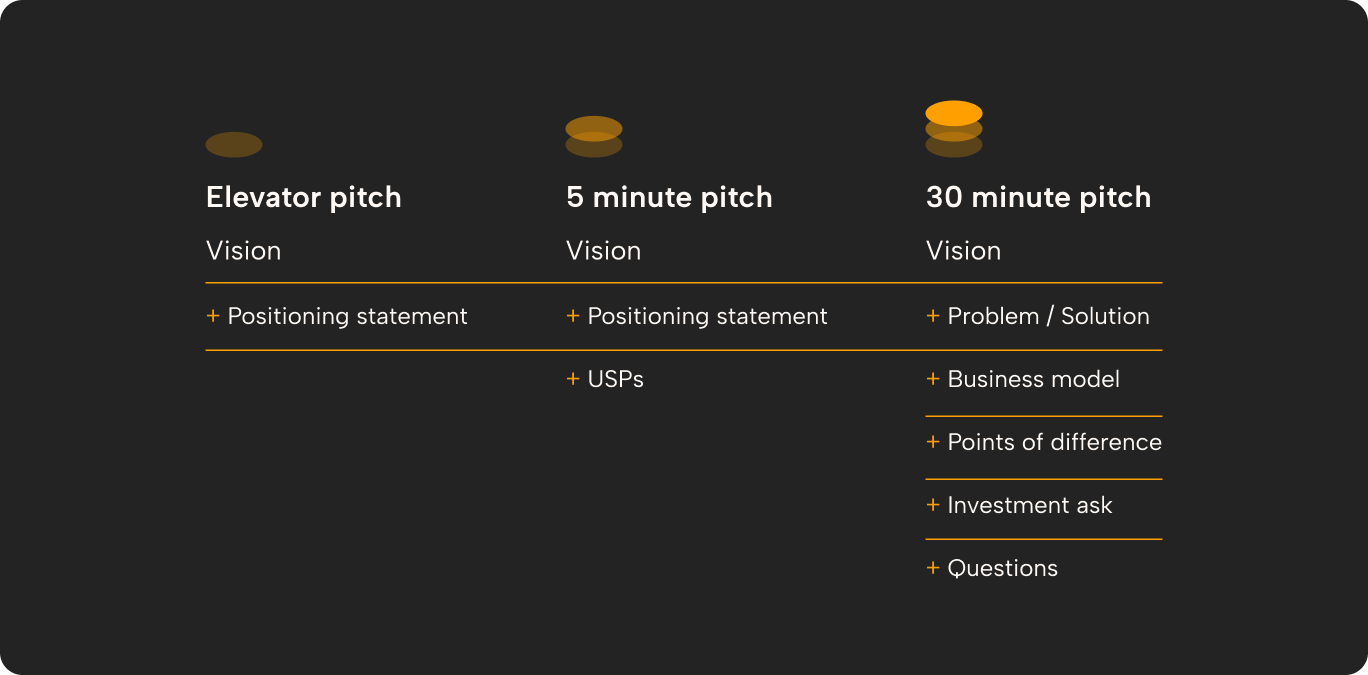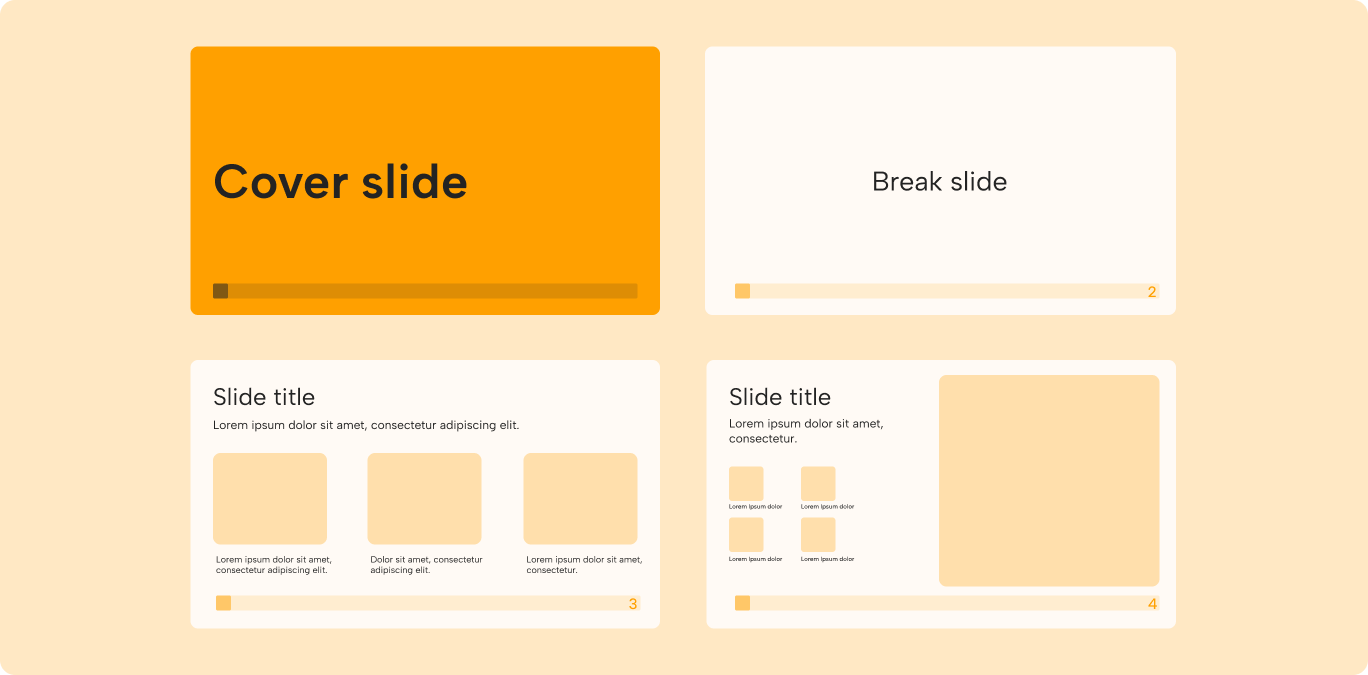The pitch deck is your ultimate opportunity to get buy-in on your unique point of view as a business.
Successful pitch decks engage with a story, convince with data, and create excitement through a compelling structure. It needs to be robust yet inspiring to support your needs and set out the world you want to create.

What is a Pitch Deck and Why Does it Matter?
What makes a good pitch deck? Over the past decade, pitch decks have evolved from PowerPoint slides laden with bullet points to wireframed-to-perfection showpieces guided by narrative storytelling.
A pitch deck is a high-stakes document. It is usually not updated for several years until the next fundraising round, and when starting to write for your next round one feels like a freshman. This deck is responsible for supporting founders in driving huge value for their companies and a 15-25 slide document can help raise millions of dollars.
In addition to this, a pitch deck’s nature is two-sided. While data is fundamental to any successful pitch, investors are still looking for a story and a product, not just a collection of data points.
So how do you create a compelling pitch deck, over and over again?

Pitch Deck Fundamentals
Before diving into writing your pitch, think about your key goal and audience first. A successful pitch prompts your audience to help achieve your goal.
Start with drafting your story arc by focusing on making an effective, action-oriented, snappy pitch. Everyone knows the types of key slides that investors expect to see. But what storytelling principles can tie them together in an effective manner?

Pitch Deck Narrative
As a rule of thumb, some of the key slides in any pitch deck include:
However, it is not only about the right slides. Your deck is an opportunity to take investors on a journey. Like any good story, there are key parts or characters you want to introduce to help connect with the reader and help them see the value of what you are offering.
The Protagonist
Identify the users of your product or service and keep their needs at the forefront of your mind. Everything you do as a business is in service to your end user.
Be specific about what your product is, how it works, and its monetization structure.
The Goals of a Protagonist
What problem does your business solve for your audience? Be clear about what this is and don’t complicate it by trying to solve multiple problems at once.
Be specific about who you serve, have specific use cases and examples, and be very clear about how your product or service makes their lives better.
What's at Stake
Here you can create an emotional connection to the audience and the reader. Build the world in which you're operating and why your business matters in this world. You want the reader to believe that without your business the problem can’t be solved.
Be specific about your knowledge of the market, its trends, the competition, and how you compare to them.
The Spark That Leads to Meeting Goals
This is your idea, the reason why your business should matter to the audience and investor. Be sure to connect your idea clearly to meeting the goals of your audience.
Be specific about your team, your unique experience and skills, and any innovations that you have devised to solve the problem.
In our experience, some of the best products can miss out on the deserved opportunities due to flawed pitches. Look out for these fundamental pitfalls when drafting your own:
Once the narrative work is done, make sure to not drop the ball through layout and design that further expands and solidifies your offer.
The pitch deck is your ultimate opportunity to get buy-in on your unique point of view as a business.
Successful pitch decks engage with a story, convince with data, and create excitement through a compelling structure. It needs to be robust yet inspiring to support your needs and set out the world you want to create.

What is a Pitch Deck and Why Does it Matter?
What makes a good pitch deck? Over the past decade, pitch decks have evolved from PowerPoint slides laden with bullet points to wireframed-to-perfection showpieces guided by narrative storytelling.
A pitch deck is a high-stakes document. It is usually not updated for several years until the next fundraising round, and when starting to write for your next round one feels like a freshman. This deck is responsible for supporting founders in driving huge value for their companies and a 15-25 slide document can help raise millions of dollars.
In addition to this, a pitch deck’s nature is two-sided. While data is fundamental to any successful pitch, investors are still looking for a story and a product, not just a collection of data points.
So how do you create a compelling pitch deck, over and over again?

Pitch Deck Fundamentals
Before diving into writing your pitch, think about your key goal and audience first. A successful pitch prompts your audience to help achieve your goal.
Start with drafting your story arc by focusing on making an effective, action-oriented, snappy pitch. Everyone knows the types of key slides that investors expect to see. But what storytelling principles can tie them together in an effective manner?

Pitch Deck Narrative
As a rule of thumb, some of the key slides in any pitch deck include:
However, it is not only about the right slides. Your deck is an opportunity to take investors on a journey. Like any good story, there are key parts or characters you want to introduce to help connect with the reader and help them see the value of what you are offering.
The Protagonist
Identify the users of your product or service and keep their needs at the forefront of your mind. Everything you do as a business is in service to your end user.
Be specific about what your product is, how it works, and its monetization structure.
The Goals of a Protagonist
What problem does your business solve for your audience? Be clear about what this is and don’t complicate it by trying to solve multiple problems at once.
Be specific about who you serve, have specific use cases and examples, and be very clear about how your product or service makes their lives better.
What's at Stake
Here you can create an emotional connection to the audience and the reader. Build the world in which you're operating and why your business matters in this world. You want the reader to believe that without your business the problem can’t be solved.
Be specific about your knowledge of the market, its trends, the competition, and how you compare to them.
The Spark That Leads to Meeting Goals
This is your idea, the reason why your business should matter to the audience and investor. Be sure to connect your idea clearly to meeting the goals of your audience.
Be specific about your team, your unique experience and skills, and any innovations that you have devised to solve the problem.
In our experience, some of the best products can miss out on the deserved opportunities due to flawed pitches. Look out for these fundamental pitfalls when drafting your own:
Once the narrative work is done, make sure to not drop the ball through layout and design that further expands and solidifies your offer.
"Fancy writing doesn't just conceal ideas. It can also conceal the lack of them."
- Paul Graham
Pitch Deck Layout
VC firms get thousands of pitches a year. You’ll have to work extra hard to get noticed if you use the same pitch deck template as 5,000 other presentations. However, there’s no need to fundamentally differentiate yourself structurally. Lack of or misplacement of crucial slides may confuse investors used to a specific slide count, including fundamentals like Problem, Solution, Product, Opportunity size, Competitors, Roadmap, Team, or Funding.
Instead, be bold and differentiate with your idea. Although the structure is incredibly important in a pitch deck, successful pitches find the balance between emphasizing the idea throughout and maintaining a structure relatable to investors at the same time.
Keeping your pitch deck layout accessible and consistent throughout your deck helps your audience focus on what’s important:

Less is more when it comes to pitch deck design. Using fewer words and more white space helps to attract attention to what’s important. White space gives your narrative room to “breathe”.
Pitch Deck Design
Design in your deck process should not be an afterthought. It is a powerful tool that helps clarify, amplify and bolden your message. It can also dampen the whole experience.
Pitch deck design when done well amplifies your message, extends your brand, and creates a unified experience, leaving a memorable impression and most importantly, giving your deck a professional feel no matter how early in your growth you are.
Thinking about key design elements before you begin crafting your story will help you set up a more cohesive and easy-to-follow pitch deck:
Pitch Deck Format
You will either pitch your startup face-to-face, on a video call, or you’ll be asked to email your pitch deck for the investors to review in their own time. The commitment on the investor’s part is very different in each case. When they agree to an email, they commit to a read-through of your deck, so you can (and should) include more text and more information. When they agree to a video call, they commit to a conversation, so you should keep it light on the text and be prepared to talk.
Conclusion
A pitch deck is a collective of constantly moving parts that evolves and adjusts as you build your business and as you identify the focus of what you’re offering. There is a lot to consider and a lot riding on it. So take your time, work through the details, and map out your flow that delivers all the information you need without clouding your purpose and potential impact with unnecessary noise.
The more you get your pitch in front of people the more you will learn what connects and what doesn’t. Make pitch writing a collaborative effort if you can, gathering feedback from a range of sources that can help you shape a pitch that is compelling, engaging, and leaves the reader in no doubt of your potential.



.svg)

.png)
.png)
.svg)